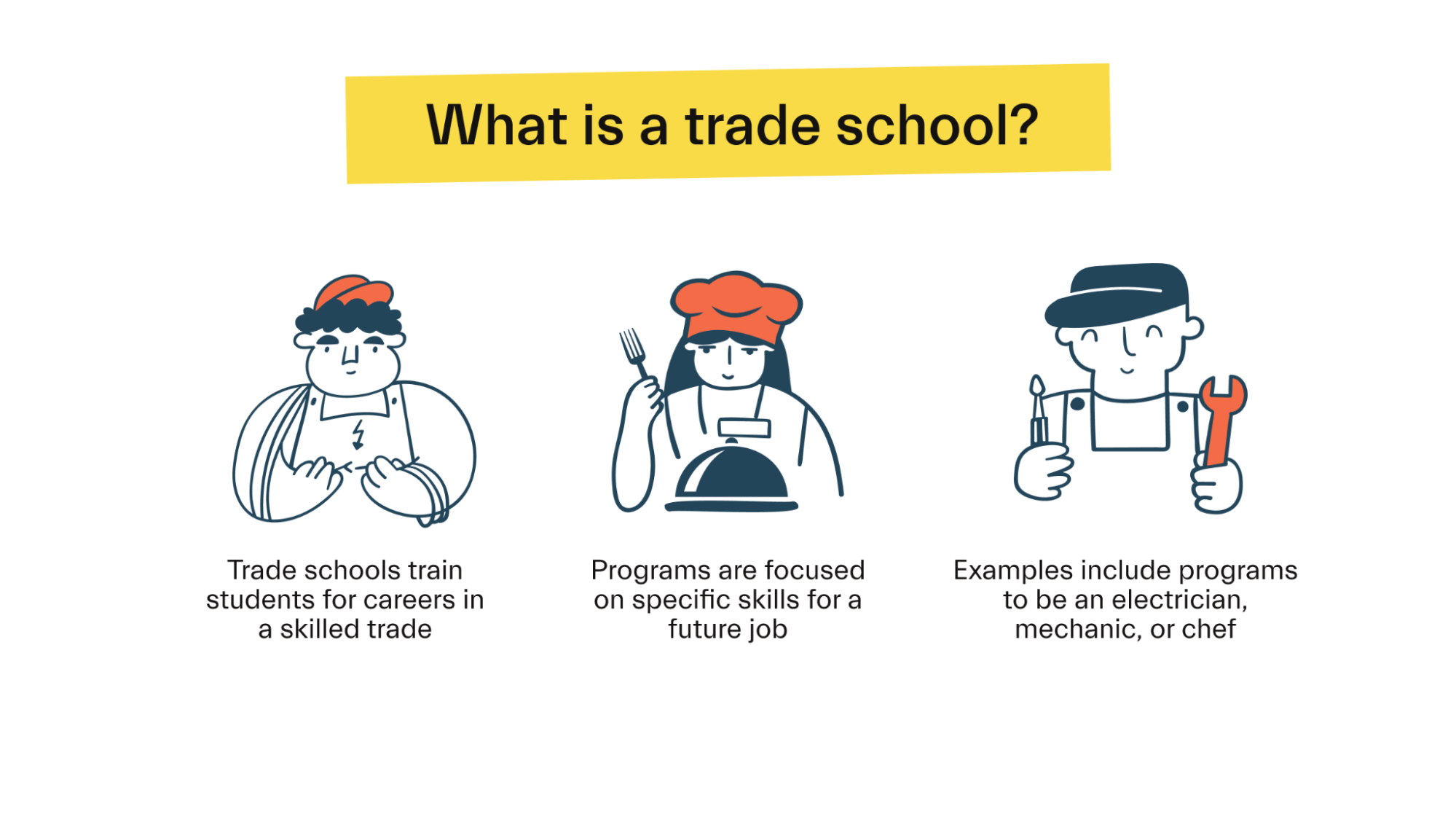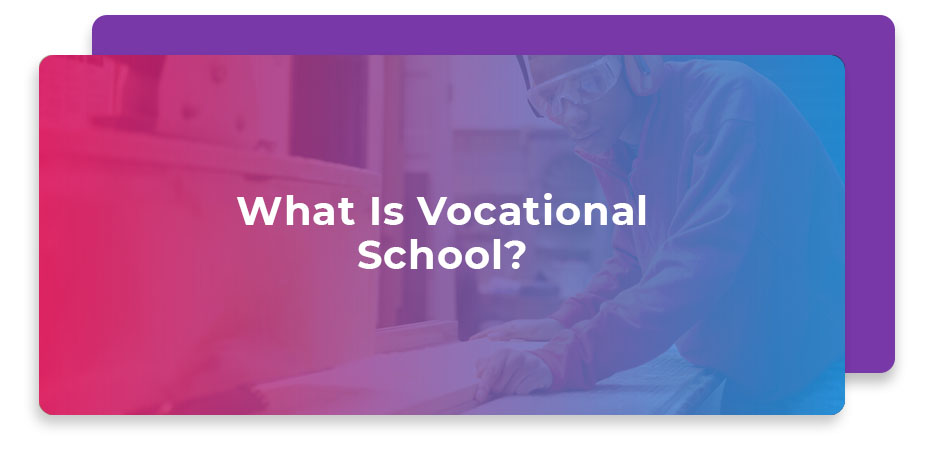Trade schools and vocational programs have gained popularity in recent years as viable alternatives to traditional four-year college degrees. Starting a Trade School or Vocational Program: A Comprehensive Guide. These educational pathways offer specialized training and hands-on experience that prepare students for specific careers and industries. If you’re considering starting a trade school or vocational program, this comprehensive guide will provide you with valuable insights and step-by-step instructions to help you navigate the process successfully.
Section 1: Understanding the Purpose and Benefits of Trade Schools and Vocational Programs
Trade schools and vocational programs serve a crucial role in bridging the skills gap and meeting the demands of the job market. Here are some key points to consider:
1.1 The Purpose of Trade Schools and Vocational Programs
Trade schools and vocational programs focus on providing practical training and education in specific trades and industries. They equip students with the skills and knowledge necessary to succeed in their chosen fields, whether it be welding, plumbing, graphic design, or culinary arts.
1.2 The Benefits of Trade Schools and Vocational Programs
- Practical Skills: Trade schools and vocational programs prioritize hands-on training, allowing students to develop practical skills that are highly valued in the job market.
- Career Readiness: These programs are designed to prepare students for immediate entry into the workforce. Graduates often find themselves in high-demand positions with promising career prospects.
- Cost-Effectiveness: Trade schools and vocational programs are generally more affordable than traditional colleges and universities. Students can save money on tuition while acquiring valuable skills.
- Job Placement Assistance: Many trade schools and vocational programs offer job placement assistance, connecting graduates with potential employers and helping them secure employment in their chosen fields.
Section 2: Researching and Identifying In-Demand Trades and Industries
Before starting a trade school or vocational program, it’s crucial to identify the trades and industries that are in high demand. Conduct thorough research to understand the current job market and future trends. Consider the following steps:
2.1 Analyze Labor Market Data
Review labor market data and projections to identify industries experiencing growth and demand for skilled workers. This information will help you determine the viability of starting a trade school or vocational program in a particular field.
2.2 Consult with Industry Experts
Connect with professionals, industry associations, and local businesses to gain insights into the specific skills and training needs of the industry you’re considering. Their expertise will help you tailor your program to meet industry requirements effectively.

2.3 Consider Regional Factors
Take into account regional factors such as population demographics, economic conditions, and local industry needs. Different regions may have varying demands for certain trades and industries, so it’s crucial to align your program with these factors.
Section 3: Developing a Curriculum and Course Offerings
Once you have identified the trades and industries you want to focus on, it’s time to develop a comprehensive curriculum and determine the courses you will offer. Here’s how to proceed:
3.1 Define Learning Objectives
Clearly define the learning objectives for each course or program you plan to offer. These objectives should be aligned with industry standards and reflect the skills and knowledge students need to succeed in their chosen fields.
3.2 Conduct a Skills Gap Analysis
Identify the specific skills and knowledge gaps within the chosen industry. This analysis will help you design a curriculum that addresses these gaps and ensures students are equipped with the necessary competencies.
3.3 Incorporate Hands-on Training
Trade schools and vocational programs thrive on hands-on training. Develop practical training modules and ensure students have ample opportunities to practice their skills in real-world settings. Collaborate with local businesses and industry partners to provide internships or apprenticeships.
3.4 Stay Updated with Industry Trends
Continuously monitor industry trends and advancements to keep your curriculum relevant and up-to-date. This will ensure that your students are learning the latest techniques and technologies used in the field.
Section 4: Securing Accreditation and Licensing
Accreditation and licensing play a critical role in establishing the credibility and legitimacy of your trade school or vocational program. Follow these steps to secure the necessary approvals:
4.1 Research Accreditation Agencies
Identify the accreditation agencies relevant to your field of study. These agencies evaluate the quality and standards of educational institutions. Ensure that the agencies you choose are recognized and respected within the industry.
4.2 Meet Accreditation Requirements
Review the accreditation requirements and ensure that your program meets all the necessary criteria. This may include faculty qualifications, curriculum standards, facilities, and student support services.
4.3 Obtain State Licensing
Research the licensing requirements specific to your state. Contact the appropriate licensing authorities to understand the application process and ensure compliance with all regulations.
4.4 Seek Professional Assistance
Consider seeking professional assistance from consultants or educational experts who specialize in accreditation and licensing processes. They can guide you through the complex procedures and help ensure a smooth and successful application.
Section 5: Establishing Partnerships and Industry Connections
Building strong partnerships and establishing industry connections are essential for the success of your trade school or vocational program. Here are some strategies to consider:
5.1 Collaborate with Local Businesses
Forge partnerships with local businesses and industry leaders. These partnerships can offer valuable resources, including guest speakers, internships, and potential employment opportunities for your students.
5.2 Engage with Industry Associations
Join relevant industry associations and actively participate in their events and initiatives. This will help you stay connected with industry trends and establish your school as a reputable institution within the field.
5.3 Foster Alumni Relationships
Maintain a strong relationship with your alumni network. Alumni can serve as ambassadors for your program, provide mentorship to current students, and potentially offer employment opportunities.
5.4 Seek Grant and Funding Opportunities
Explore grant and funding opportunities available for trade schools and vocational programs. Funding from government agencies, foundations, or private organizations can help support your institution and provide scholarships for students.
Section 6: Securing Facilities and Resources
To successfully operate a trade school or vocational program, you’ll need appropriate facilities and resources. Consider the following:
6.1 Determine Facility Requirements
Assess your space requirements based on the number of students, classrooms, labs, and specialized equipment you plan to have. Ensure that your facilities meet all safety and accessibility standards.
6.2 Acquire Necessary Equipment and Tools
Identify the specific equipment and tools required for each program or course. This may include machinery, technology, software, or specialized instruments. Procure or lease these items to provide students with hands-on training opportunities.
6.3 Invest in Technology and Software
Utilize technology and software applications to enhance the learning experience. This may include virtual simulations, online learning platforms, and industry-specific software tools that replicate real-world scenarios.
6.4 Recruit Qualified Faculty and Staff
Hire experienced and knowledgeable faculty members who have expertise in the trades and industries you offer. Additionally, recruit support staff to assist with administrative tasks, student services, and career counseling.

Section 7: Marketing and Promoting Your Trade School or Vocational Program
Effectively marketing and promoting your trade school or vocational program is essential for attracting students and gaining recognition within the industry. Consider the following strategies:
7.1 Develop a Strong Brand Identity
Create a compelling brand identity that reflects the unique value proposition of your institution. Develop a logo, website, and marketing materials that convey professionalism and credibility.
7.2 Utilize Digital Marketing Strategies
Leverage digital marketing channels to reach your target audience. Develop a strong online presence through search engine optimization (SEO), social media marketing, and content marketing.
7.3 Attend Career Fairs and Events
Participate in career fairs and industry events to showcase your program to potential students. Engage with attendees, distribute informational materials, and highlight the career opportunities available through your institution.
7.4 Offer Scholarships and Financial Aid
Create scholarship programs or financial aid options to make your program more accessible to a wider range of students. Promote these opportunities to attract prospective students who may be concerned about the cost of education.
Section 8: Providing Support Services and Student Success Initiatives
Ensuring the success and well-being of your students is crucial. Implement support services and student success initiatives to promote a positive learning experience. Consider the following:
8.1 Academic Support Services
Offer academic support services such as tutoring, study groups, and workshops to assist students in their coursework. Provide resources and tools to help them succeed academically.
8.2 Career Counseling and Job Placement
Establish a robust career counseling program to guide students in their career paths. Provide resume writing assistance, interview preparation, and job placement support to enhance their employment prospects.
8.3 Alumni Mentorship Programs
Create mentorship programs that connect current students with successful alumni in their chosen fields. This mentorship can provide valuable guidance, networking opportunities, and industry insights.
8.4 Student Engagement and Extracurricular Activities
Encourage student engagement through extracurricular activities, clubs, and organizations. These initiatives foster a sense of community and provide additional opportunities for skill development and networking.
Section 9: Continuous Improvement and Evaluation
To ensure the long-term success of your trade school or vocational program, it’s essential to continuously evaluate and improve your offerings. Consider the following strategies:
9.1 Collect Student Feedback
Regularly gather feedback from students about their experiences and areas for improvement. Conduct surveys, focus groups, or one-on-one interviews to gain valuable insights.
9.2 Engage in Program Evaluation
Evaluate the effectiveness of your curriculum, teaching methods, and support services. Identify areas where enhancements can be made to better meet the needs of your students and industry standards.
9.3 Stay Updated with Industry Changes
Continuously monitor industry changes, advancements, and emerging trends. Adapt your curriculum and course offerings accordingly to ensure your students receive the most relevant and up-to-date education.
9.4 Seek Faculty Professional Development
Invest in professional development opportunities for your faculty to enhance their teaching skills and keep them updated with the latest industry practices. Encourage them to attend workshops, conferences, and training programs.

Section 10: Compliance with Regulatory and Legal Requirements
Ensure that your trade school or vocational program complies with all regulatory and legal requirements. Consider the following steps:
10.1 Understand Federal and State Regulations
Familiarize yourself with federal and state regulations governing trade schools and vocational programs. Ensure that your institution meets all requirements related to curriculum, faculty qualifications, student records, and financial practices.
10.2 Obtain Necessary Permits and Licenses
Obtain the required permits and licenses to operate your institution legally. This may include business licenses, zoning permits, and compliance with health and safety regulations.

10.3 Establish Financial Aid Policies
Develop clear and transparent financial aid policies that comply with federal regulations. Ensure that your institution’s financial practices are ethical and in line with industry standards.
10.4 Maintain Accurate Student Records
Implement robust systems for maintaining accurate student records, including enrollment, attendance, grades, and financial transactions. Ensure compliance with student privacy laws, such as the Family Educational Rights and Privacy Act (FERPA).
Section 11: Evaluating the Return on Investment (ROI)
Evaluating the return on investment (ROI) of your trade school or vocational program is vital to measure its success and make informed decisions. Consider the following factors:
11.1 Track Employment Outcomes
Monitor the employment outcomes of your graduates to determine the effectiveness of your program. Track metrics such as employment rates, job placement, and starting salaries to assess the ROI for your students.
11.2 Evaluate Student Satisfaction
Regularly assess student satisfaction through surveys or focus groups. Gather feedback on the quality of education, support services, career opportunities, and overall satisfaction with the program.
11.3 Analyze Financial Performance
Conduct regular financial analyses to assess the financial viability of your institution. Evaluate revenue streams, operating expenses, and profitability to ensure the long-term sustainability of your trade school or vocational program.
11.4 Seek External Evaluation
Consider engaging external evaluators or consultants to conduct an objective assessment of your program’s effectiveness and ROI. Their insights and recommendations can help identify areas for improvement and strategic growth.
Conclusion
Starting a trade school or vocational program requires careful planning, research, and execution. By understanding the purpose and benefits of these programs, conducting thorough market research, developing a relevant curriculum, securing accreditation, establishing partnerships, and implementing student support services, you can create a successful institution that prepares students for rewarding careers in their chosen fields. Continuously evaluate and adapt your offerings to stay current and ensure the long-term success of your trade school or vocational program.
